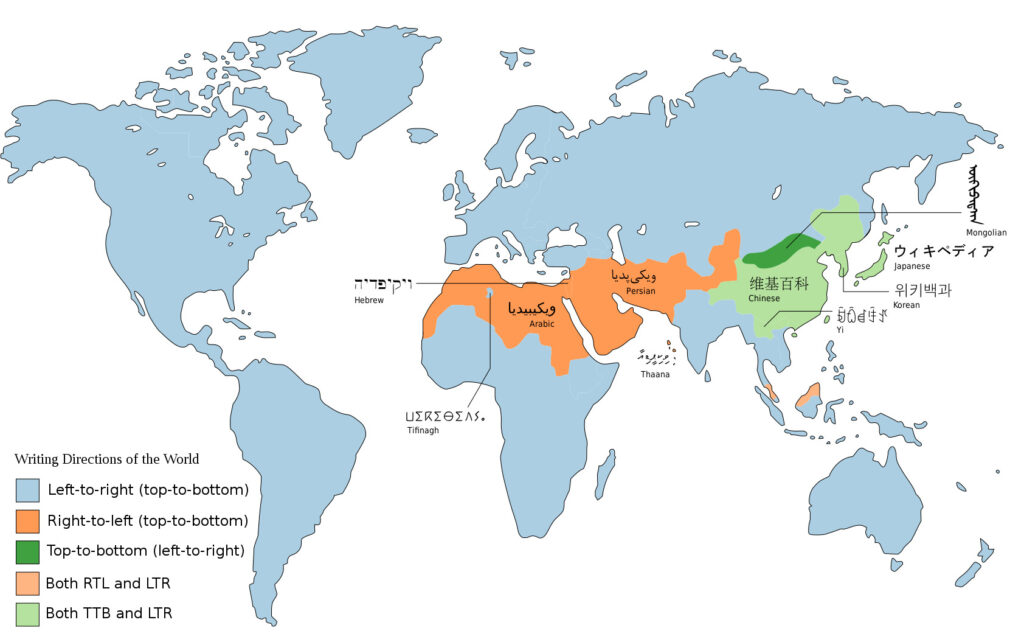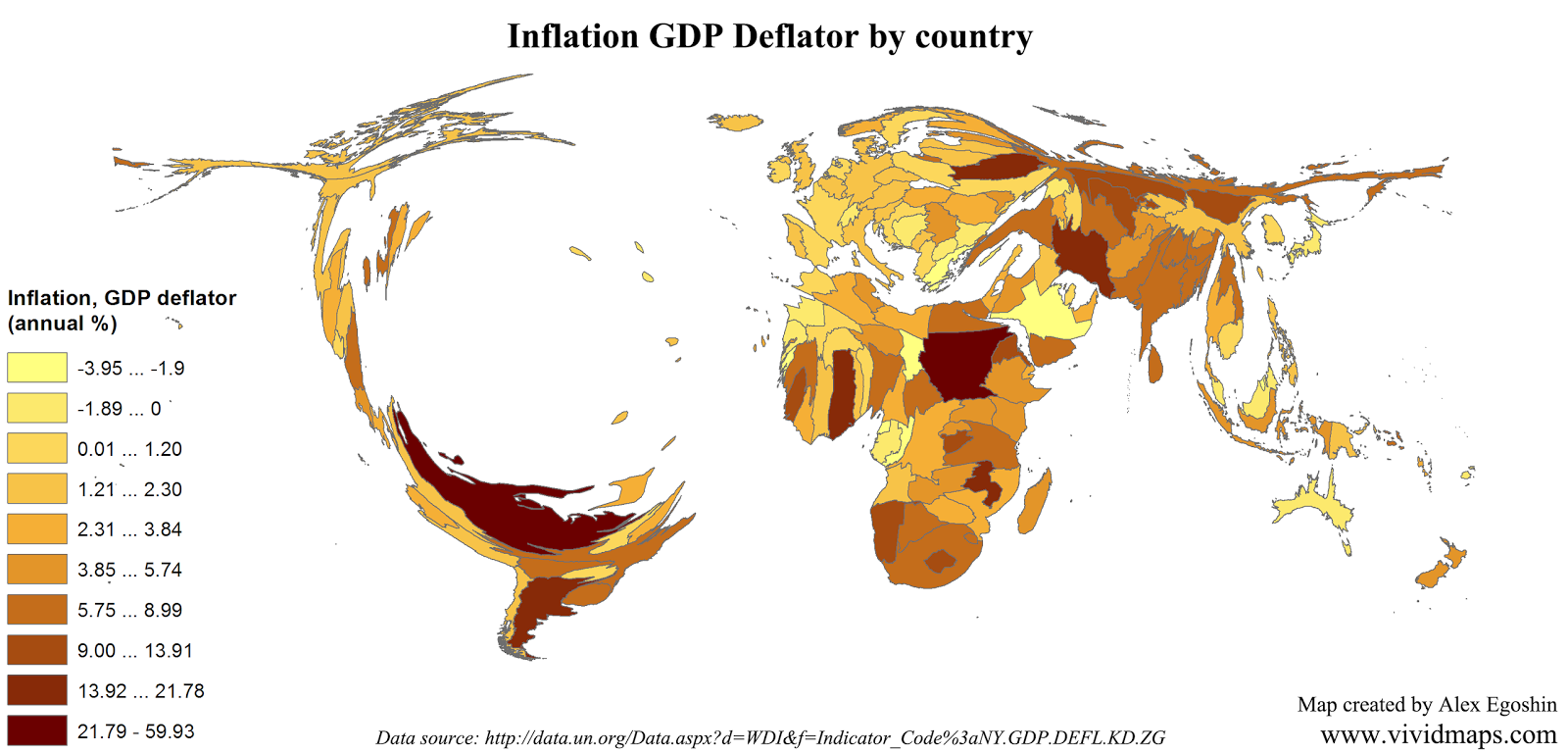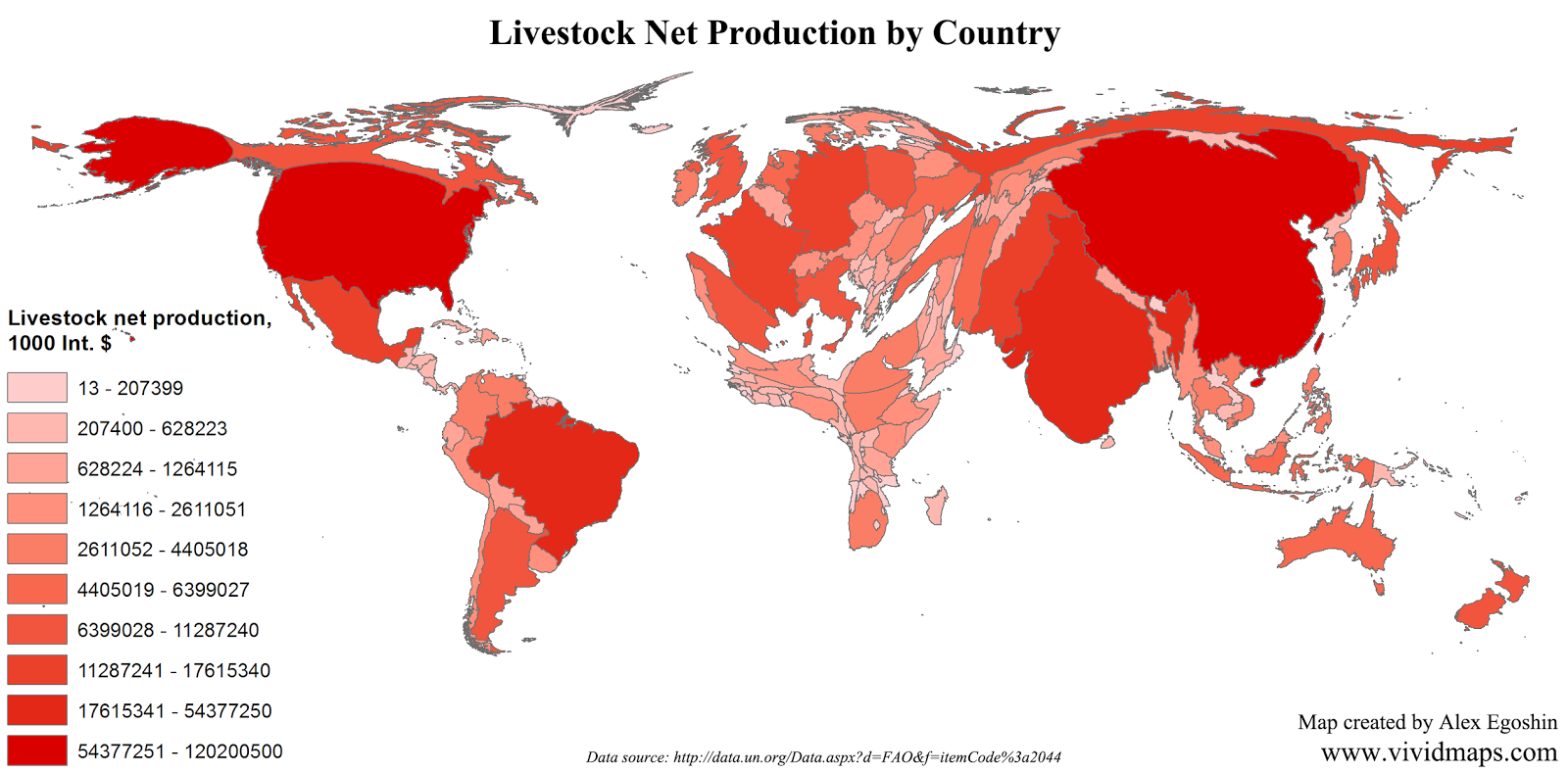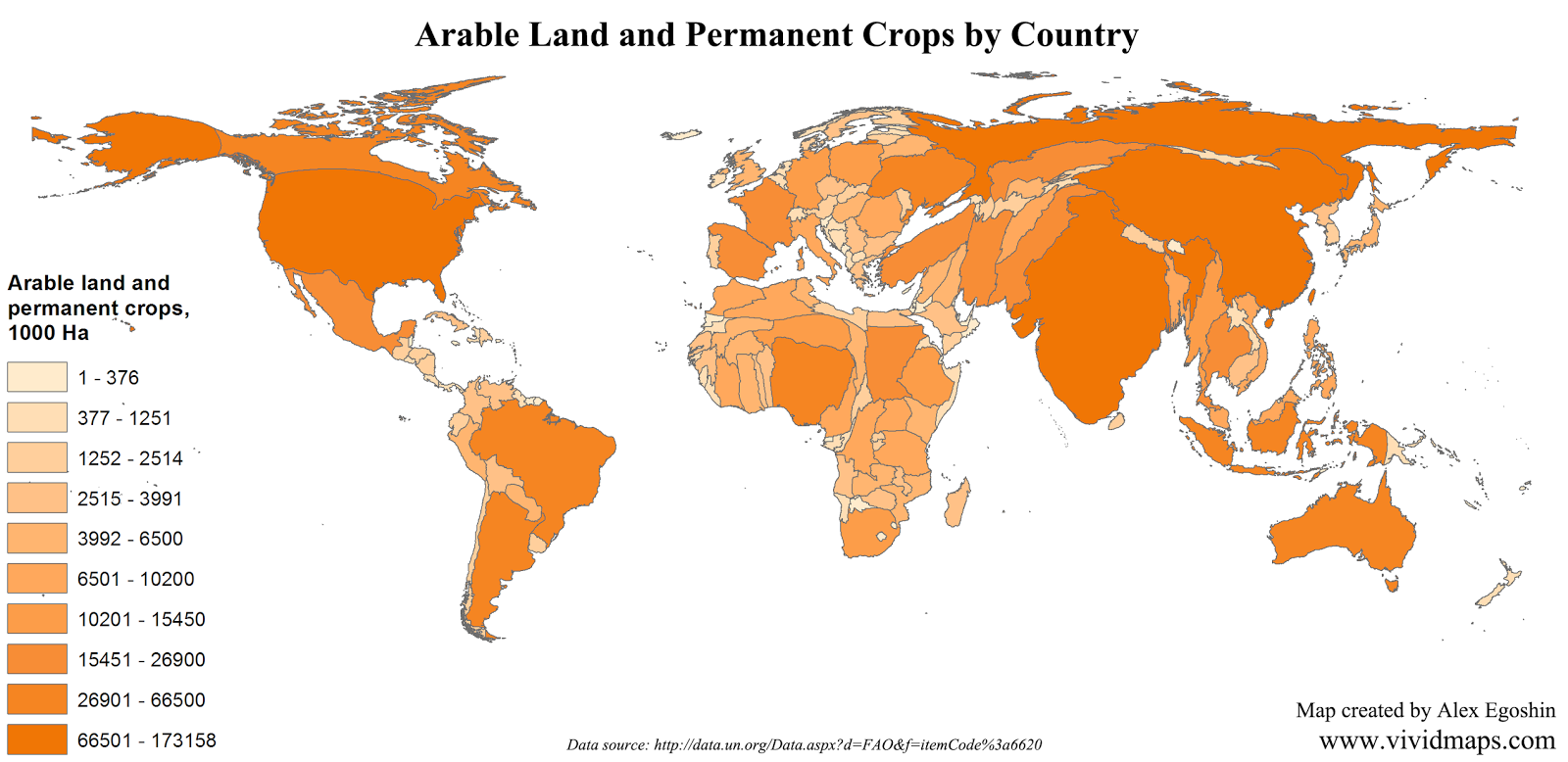Writing directions of the World
Writing directions, also known as writing systems or scripts, refer to the various ways in which languages are represented visually using symbols, characters, or glyphs. Writing directions can be broadly categorized into three main types: left-to-right (LTR), right-to-left (RTL), and top-to-bottom (TTB).
In left-to-right (LTR) writing systems, text is written and read from left to right, moving horizontally across the page. This direction is commonly used in many languages, including English, French, Spanish, and German. The majority of Western languages use LTR writing.
In right-to-left (RTL) writing systems, text is written and read from right to left, moving horizontally across the page in the opposite direction of LTR writing. RTL writing is most commonly associated with languages that use the Arabic script, such as Arabic, Persian (Farsi), and Hebrew. Some other languages, like Urdu, also use RTL writing.
In top-to-bottom (TTB) writing systems, text is written and read from top to bottom, moving vertically down the page. This direction is used in some Asian languages, including traditional Chinese, Japanese, and Korean. However, it’s important to note that the writing direction can vary within these languages. For example, modern Chinese is often written left to right in horizontal lines, while traditional vertical TTB writing is still used for certain purposes.
Table of Contents

Why are most countries using the left-to-right writing system?
The prevalence of left-to-right (LTR) writing systems in most countries can be attributed to historical and practical factors, as well as cultural and linguistic influences. Here are some key reasons why the majority of countries use LTR writing:
- Historical Development: Many of the world’s oldest writing systems, such as those of ancient Mesopotamia and Egypt, evolved into LTR orientations. The direction of writing was likely influenced by the tools used for writing (e.g., chisels or styluses) and the materials (e.g., clay tablets) that facilitated a leftward movement.
- Ease of Writing: LTR writing systems are well-suited for right-handed individuals, who make up the majority of the population. Writing from left to right allows the writer’s hand to move more freely and reduces the likelihood of smudging the ink or materials.
- Influence of Cultural Contact: The spread of cultural and linguistic influences over time played a role in the adoption of LTR writing. As trade, exploration, and cultural interactions expanded, LTR writing systems became more widespread due to their use by influential civilizations.
- Printing and Publishing: The invention of the printing press by Johannes Gutenberg in the 15th century further solidified LTR writing’s dominance. The movable type used in printing was designed for LTR scripts, which contributed to the global dissemination of books and written materials.
- Westernization: Colonialism and the global influence of European powers introduced LTR writing systems to many parts of the world. European languages and their associated LTR scripts were often imposed or adopted as a result of colonial rule.
- Readability and Consistency: LTR writing is generally easier to read for individuals who are accustomed to this orientation. Additionally, LTR writing systems often have more consistent spacing between words, making the text easier to interpret.
- Technological Advancements: With the advent of digital technology and the global spread of the internet, LTR writing systems have become even more prevalent due to the existing infrastructure and software that support this direction.
Which countries use the right-to-left writing system and why?
The right-to-left (RTL) writing system is often associated with languages that have historical, cultural, or religious ties to the Middle East and North Africa. Here are some countries that use RTL writing systems and some of the reasons why:
The Arabic script is one of the most well-known RTL writing systems. It is used for languages such as Arabic, Persian (Farsi), Urdu, Kurdish, Pashto, and more. The prevalence of the Arabic script is due to its historical significance as the script of the Quran and its adoption by the Islamic civilization. Many languages in the Middle East, Central Asia, and South Asia use variations of the Arabic script.
The Hebrew script is used for the Hebrew language, primarily spoken in Israel. It is also used for writing Yiddish, Ladino, and other Jewish languages. The Hebrew script has religious and cultural significance and has been used for Jewish religious texts for centuries.
Several other Semitic languages, such as Amharic (Ethiopia), Tigrinya (Eritrea), and Syriac (used by various Christian communities in the Middle East), use RTL scripts due to historical and linguistic connections to the region.
While most Indic scripts are left-to-right, some RTL variations exist. For example, the Nastaʿlīq script is used for writing Urdu and is influenced by the Persian script. While Urdu is often written in Nastaʿlīq, it can also be written in the Arabic script.
Which countries use the top-to-bottom writing system and why?
Top-to-bottom writing systems are used in several countries, primarily in East Asia. This writing orientation involves arranging text vertically, with columns running from top to bottom, and the lines are read from right to left or left to right, depending on the specific language and culture. The primary countries that use top-to-bottom writing systems include:
- China: In traditional Chinese writing, columns of characters are traditionally arranged from top to bottom and read from right to left. This orientation is less common in modern Chinese writing, where horizontal left-to-right writing (like in English) is the standard.
- Japan: Japanese writing can be arranged both horizontally and vertically, with vertical orientation being more common in traditional contexts, such as formal documents, novels, and some newspapers. The choice between horizontal and vertical writing often depends on the content and context.
- Korea: In South Korea, vertical writing is not common, but it has been used in some historical documents. In North Korea, vertical writing is used more frequently and is influenced by traditional Chinese writing practices.
- Vietnam: While modern Vietnamese is usually written horizontally (left to right), ancient Vietnamese scripts were often written vertically in columns, particularly in historical texts.
The use of top-to-bottom writing systems is often rooted in historical and cultural practices. These writing orientations can reflect cultural preferences, artistic aesthetics, and the influence of traditional calligraphy. Additionally, the choice of writing orientation can be influenced by the tools and materials used for writing, as well as practical considerations, such as the direction of brush strokes in calligraphy.
To learn more about languages, have a look at the following books and software:
- Fluent Forever: How to Learn Any Language Fast and Never Forget It
- Rosetta Stone Learn UNLIMITED Languages
You may also be interested in our previously published map: Different Counting Systems Mapped








